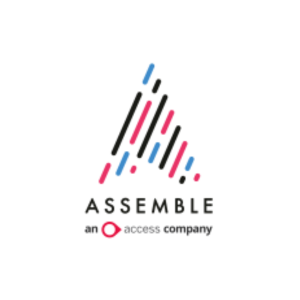Insights
INSIGHTS
All Topics
My Account
How to host an internal hybrid meeting
29 Sep 2021by Laura Stanley
We explore how charities can successfully hold meetings catering for both virtual and in-person attendees as the world of work goes hybrid
The way we work has altered hugely since the beginning of 2020, as our offices moved home, and our meetings became virtual.
But in late 2021, attention has now turned to successfully bringing our teams back together. While some organisations are encouraging their staff to make a full return to the office, a significant number are expected to adopt a hybrid style of working, mixing both remote and office-based working.
There are a myriad of benefits to hybrid working – more flexibility and more accessibility for those not able to get into the office, to name but two – but there are also several logistical issues to consider when it comes to implementing it as a system.
For example, how often should people come into the office? How should the office timetable be managed? Is everyone feeling included, with plenty of face-to-face contact?
These challenges are clear, but not insurmountable. When it comes to hybrid meetings, in particular, there should be no reason for a loss of quality. Take board meetings – almost 80% of directors, executives, and administrators reported an improvement in the effectiveness of their board meetings since remote working began, according to the 2021 Board Effectiveness Survey, from software provider OnBoard.
Nevertheless, hosting a hybrid meeting can be a minefield if not prepared for adequately. For example, it is vital that steps are taken to make sure everyone is heard, no matter where they are attending from. There is a tendency to respond more to those who are right in front of us over virtual attendees, meaning that some participants could be denied an equal voice in key decisions that affect the running of the organisation.
Technology can play a large part in helping organisations achieve parity between attendees. Board portal tools such as OnBoard can help all meeting attendees to prepare before meetings, wherever they are joining from, giving them equal access to the right materials ahead of time. They can review, sign, and add comments before the meeting, allowing for better collaboration and communication on the day.
Good sound, good connections, and devices that can handle a lot of bandwidth can also be the difference between a frustrating meeting and a brilliant one. It is impossible to give someone’s views an equal weight if they cannot be heard properly over tinny speakers. Adopting new ways of working means adopting the right tools and making sure everyone can use them effectively.
Hybrid working does not mean the end for effective meetings. Like everything else that happened in the past 18 months, it is simply a matter of adjusting.
How to be a good host
First of all, charities need to consider who will be attending the meeting and from where, and organise this in plenty of time before the meeting. Hosting hybrid meetings means managing lots of different needs and people who are attending virtually will have different expectations than those attending in person.
Frustration sets in when teething issues result from poor planning. It is easy enough to sympathise with the odd connectivity issue, but when the problem results from disorganisation, such as having the incorrect technology or sending out the wrong invite link, generosity wanes.
Organisations also need to think intentionally about how they design a hybrid meeting, so in-person attendees remain ever conscious of their remote counterparts.
For instance:
- Do you require every participant, both in-person and remote, to log in to the meeting online, so everyone can be seen and heard?
- Is it confusing for in-person attendees when hearing each other talk both in the room and online, and can they socially distance?
- Can you schedule breakout sessions that include remote and in-person members, so everyone’s ideas get heard and no one feels like an afterthought?
- Do you need to assign an in-person intermediary to act on the behalf of remote attendees, giving them a direct line to better communication and reducing their feelings of isolation?
We all know what is possible in a virtual meeting now – we’ve spent the best part of two years becoming experts on Zoom. But in a hybrid environment, the above steps can help a lot in helping things to run smoothly.
Group chats can come in handy too for reducing the amount of unnecessary meetings, for checking in, and for sharing meeting notes to ensure that nothing is missed and that the requisite actions from the meeting are taken.
You can also implement a board portal for your organisation to brainstorm ideas in one central hub for all members to access at their convenience.
How to structure a meeting
Designing your meeting to better accommodate attendees is crucial but implementing structure within the meeting itself is just as important. Without structure, meetings can be inefficient and waste the valuable time of everyone involved – and we all know how limited time is in the charity sector!
Here are four key steps to consider when setting your meeting agenda.
- Make sure you know who is attending the meeting and how – remotely or in person. Consider what you need and the best format to host them. How will attendees feature, do you need multiple screens to show speakers? Does everyone have access to the correct documents, whether hard copies or in the Cloud?
- Attendees should establish common priorities and goals to ensure that everyone knows what the meeting is trying to achieve and can dedicate enough time to focus on the right issues
- Ensure all discussions end with recommendations for actionable steps – meetings can be repetitive and go round in circles if solutions are not suggested to improve the issue they have been called to address.
- Ask if everyone has the right tools they need to do their jobs and, importantly, if they can use them. This includes technology for the meeting itself – do they have everything they need to attend the next one?
Ultimately, the outcome of a meeting can only be as good as the meeting itself. If attendees are prepared, given the correct tools, and can speak freely when they want to, from wherever they want to, a hybrid meeting should be as fruitful as any other.
Updating the meeting rulebook
The ways we meet may be changing, but the underlying principles have yet to change. Robert’s Rules of Order, published in 1876, outlines how to govern a meeting successfully. Though it is 145-years-old, the book remains the most widely used manual to parliamentary procedure in the United States and is used by church groups, trade unions, school boards, and many other organisations looking to make the most of their meetings.
The rules are a little outdated now, in this hybrid environment, OnBoard has adapted the rules for a modern audience, giving tips and advice on the six basic stages of a meeting, from the call to order to the moment it is adjourned.
Board – and, indeed, all – meetings should be informed, effective, and uncomplicated. There is no reason that should change with hybrid working.
Download OnBoard’s cheat sheet for hosting a good meeting
Click above to download the guide to the six stages of every board meeting, with tips on how to set agendas, carry motions, and make the most of your time.
More on this topic
07 Mar 2025by Laura Stanley
An introvert’s guide to networking
27 Feb 2025by Laura Stanley
Charity Spotlight: Dr Anton Mari Lim, President, Yellow Boat of Hope Foundation
Recommended Products
Our Events
Charity Digital Academy
Our courses aim, in just three hours, to enhance soft skills and hard skills, boost your knowledge of finance and artificial intelligence, and supercharge your digital capabilities. Check out some of the incredible options by clicking here.

















